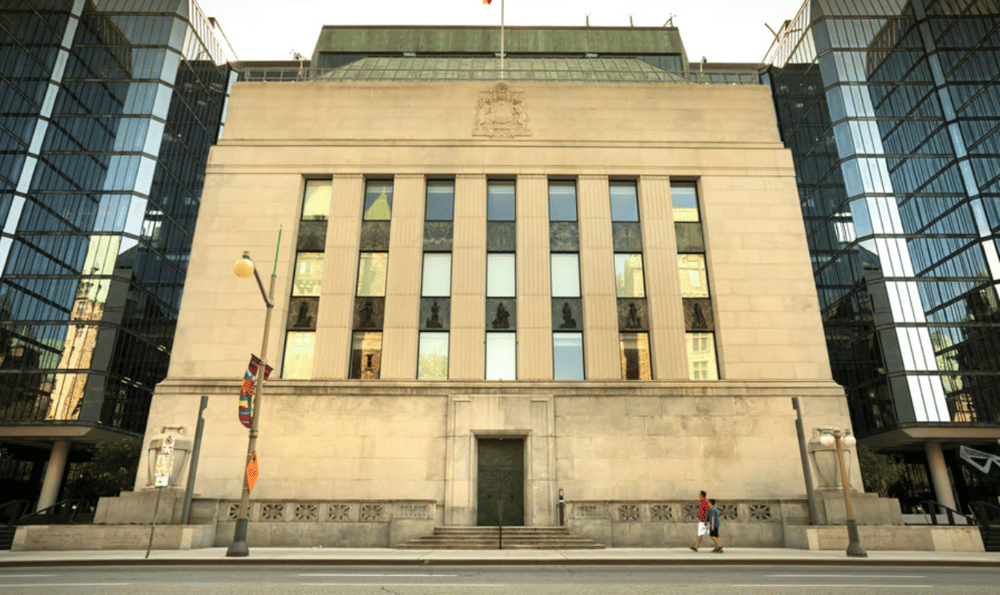Central bank releases summary of deliberations as markets closely watch for clues on future cuts

14 Aug. 2025
Share
Newly released deliberations from the Bank of Canada (BoC) reveal that policymakers debated last month whether the central bank’s benchmark interest rate is already low enough to help the economy withstand escalating US tariffs.
The summary of discussions, published Wednesday, covers the lead-up to the BoC’s July 30 decision to keep its policy rate at 2.75%. According to the documents, some members of the governing council questioned if previous rate cuts – seven in a row from June 2024 to March 2025 – had already provided “sufficient support” to guide the economy through its current trade challenges.
Governor Tiff Macklem told reporters after the decision that the bank remains “ready to respond to new information,” particularly developments in Canada-US trade.
Impact of US tariffs still emerging
The rate decision came days before US president Donald Trump increased base tariffs on Canadian goods to 35%, exempting products compliant with the Canada-United States-Mexico Agreement (CUSMA).
While early indicators pointed to resilience – including steady household spending and business investment in the first quarter – BoC members warned that much of the strength was due to companies and exporters moving purchases forward to avoid tariff costs, a temporary effect.
“Given the lagged effects of monetary policy, there was a risk that further easing might take effect only as demand was recovering, which could add to price pressures,” the deliberations state.
Inflation pressures “modest so far”
The bank said it does not expect a sharp rise in inflation directly from US tariffs. Early price effects have been “modest,” though risks remain elevated as businesses adapt supply chains and potentially pass on higher costs.
Deliberations from June 4 show the council was already grappling with a complex economic picture: a Canadian dollar up 4%, a cooling labour market – especially in trade-sensitive industries – and inflationary pressures in services and goods. At that time, core inflation was running above 3%, with members debating whether the increase reflected one-off factors or persistent cost pressures.
September decision looms
The BoC will receive July and August inflation figures before its next rate announcement on September 17.
Some forecasters expect no further rate cuts this year, while others argue that additional easing may be warranted if labour market weakness deepens and inflation remains contained.
For now, the central bank says it will proceed cautiously – balancing the need to support growth with its mandate to keep prices stable.
🔎 Blog Summary from our own @mortgagewithchar
The Bank of Canada debated cutting rates in July but ultimately held steady at 2.75%. Policymakers felt seven prior cuts since mid-2024 may already be providing enough support, especially as the economy adjusts to new US tariffs.
Key takeaways:
US tariffs: Recently increased to 35% on some Canadian goods, creating uncertainty.
Economic signals: Household spending and business investment look steady but may be temporarily inflated by companies rushing purchases ahead of tariffs.
Inflation: Still modest overall, though service and goods prices are showing pressure.
Labour market: Weakening, particularly in trade-sensitive industries.
What’s next: The BoC is watching July and August inflation data closely. Next rate decision lands September 17.
Bottom line: The BoC is cautious. No guarantee of more cuts, but they’re keeping the door open depending on how inflation and jobs hold up.

